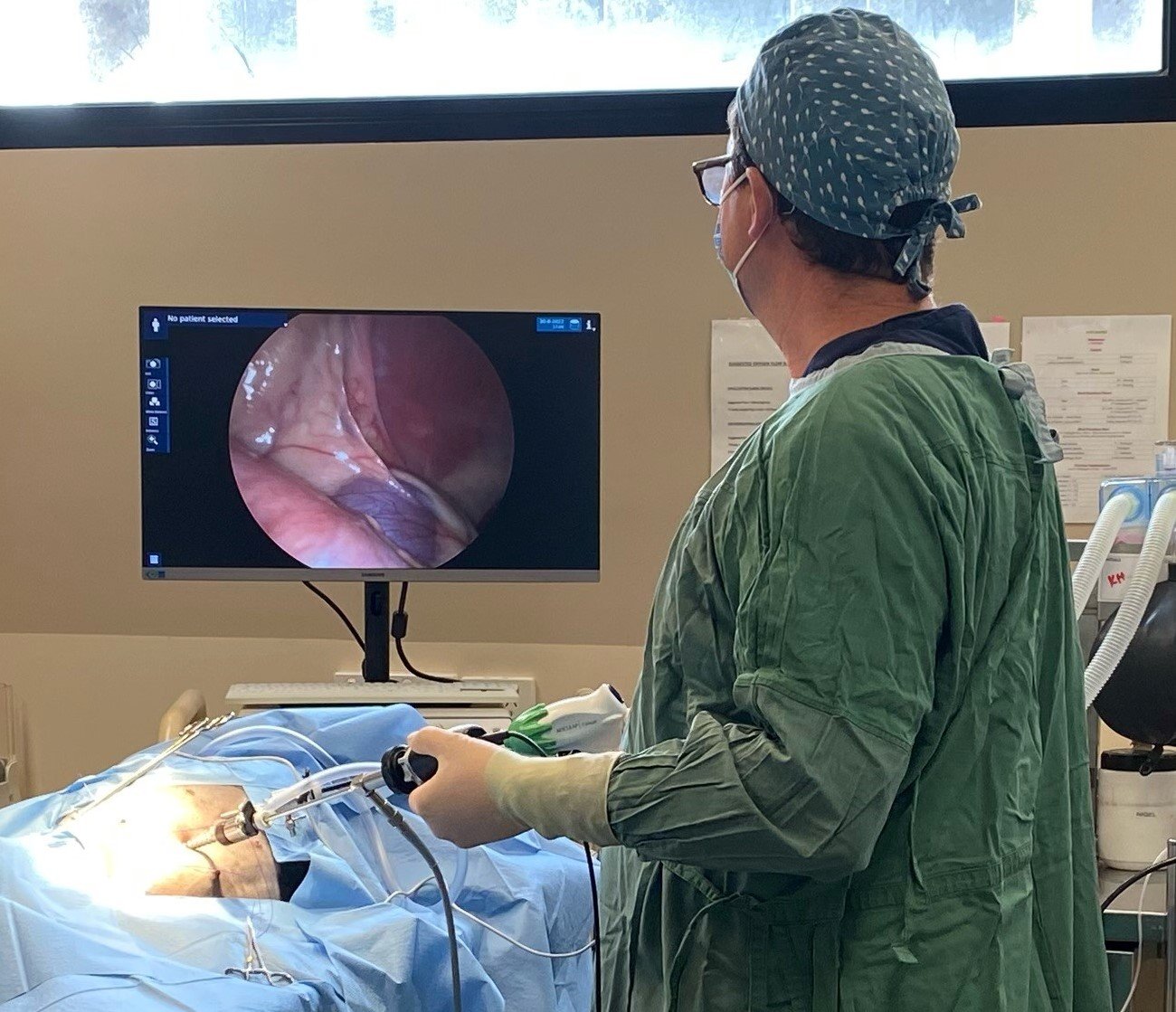
Desexing in Dogs and Cats
Desexing in dogs and cats is removal of the gonads (ovaries in females, and testicles in males) which produce hormones and gametes necessary to produce offspring. Traditionally it has been thought that the gonads purely have a function on reproduction, however there is more and more evidence to show that hormones produced by the gonads have other important functions in the body.
Benefits of desexing
Desexing prevents animals from reproducing and producing unwanted puppies and kittens. Unwanted pet overpopulation is a real problem in Australia and overseas, and desexing is shown to reduce the number of unwanted puppies and kittens which often end up in animal shelters.
Female dogs and cats have an increased risk of mammary cancer development with repetitive empty oestrus (reproductive) cycles. Whilst the data is not as clear as some report, we do know that risk of mammary tumour development increases each time the female cycles. The original data published back in the 1960’s showed that after 2 or more empty oestrus cycles, bitches and queens have an increased risk of developing mammary cancers by 26% of the original risk. This is not to say they have a 26% chance of developing mammary cancer, it is saying that the risk of mammary cancer development is increased by 26% of the original risk of mammary cancer (reported to be 0.38% in dogs and 0.15% in cats). These numbers which are in many textbooks and taught to veterinary students all over the world were obtained in 1969 so are very old and are likely not accurate due to the way the data was collected, however it still shows that with empty oestrus cycles there is an increased risk of the development of mammary cancer. There may be a protective effect of breeding and suckling to reduce the risk of mammary cancer in female dogs and cats, however this has never been proven.
Female dogs and cats which have repetitive empty oestrus cycles also have an increased risk of a disease of the uterus called pyometra. Pyometra is essentially a hormonal disease wherein the glands of the uterine lining (which are there to secrete a uterine milk to nourish and support early embryo development) become cystic and a secondary infection ensues. The uterus becomes full of pus and the female will become quite ill. This disease can be life threatening and so must be treated early. Desexing stops pyometra from occurring.
Male dogs with age will develop disease of the prostate (Benign Prostatic Hyperplasia; as they age. The prostate gland in dogs is the only accessory sex gland and the size of the prostate is linked to the fertility of the dog, so as the dog ages the prostate enlarges and the male becomes more fertile. As dogs live in captivity much longer than the wild, there has never been a mechanism in place to stop the prostate enlarging, and as the dog ages it will continue to enlarge more and more over time and eventually can become cystic resulting in blood in the urine, or blood dripping from the penis and can make the male prone to prostate infections. Desexing will both treat and prevent benign prostatic hyperplasia.
Removal of retained (abdominal) testicles in males is required as these testicles have a higher chance of forming tumours and twisting causing an acute abdominal emergency. The cut off time is 3 years of age, wherein at 3 years of age the risk of a retained testicle developing a tumour will become higher than the risk of a normally descended testicle forming a tumour.
Desexing is often recommended to improve the behaviour of aggressive temperaments. This is false and desexing won’t improve the animals behaviour. It will however prevent the animal from breeding which is a good thing as temperament is a genetic inherited trait. There are however other ways to prevent breeding in aggressive dogs which are not as intrusive or painful as surgical desexing (which may result in the aggression becoming worse due to the pain incurred).
Removes risk of gonadal tumours.
Problems of desexing
Incontinence of female dogs is a very common occurrence after desexing. This is caused by loss of hormone feedback on reproductive hormone mediators in the brain after removal of the ovaries. Whilst incontinence can be managed, it requires lifelong treatment, however some cases may be difficult to manage. Oestrogen therapy was long promoted to treat this incontinence, however it is not caused by an oestrogen deficiency as such, and due to the presence of other products on the market to treat incontinence in female dogs which are a lot safer than oestrogen therapy, oestrogen is no longer recommended.
Delayed growth plate closure. Oestrogen and testosterone are required for growth plate closure in the young growing bones of puppies and kittens. Desexing before puberty results in the growth plates staying open to an older age, predisposing these animals to growth place fractures and poor conformation increasing the risk of joint diseases.
Increased risk of cancer. There is more and more evidence to suggest desexing increases the risks of animals developing cancers (all types). This is believed to be mediated by high luteinising hormone (LH) levels after desexing. There are methods to ameliorate this issue though with desexing.
Increased risk of cranial cruciate disease. Desexing increases the risk of cranial cruciate ligament rupture in dogs which then requires painful invasive surgery to treat. The increased risk is believed to be from poor conformation when desexed prior to maturity and possibly from increased LH levels after desexing. There are methods to ameliorate this issue though with desexing.
Change in hair coat. Desexed dogs with medium to long coats lose their undercoats and as a result the coat goes fluffy and the fur will matt together more easily, making the coat more difficult to look after than entire animals. There are methods to ameliorate this issue though with desexing.
Persistent juvenile behaviour if done before maturity.
Persistence of infantile genitalia if immature when performed.
When to perform desexing
There is no one rule for every animal and owner on when to desex their pet. This requires assessment of the animal and discussion with the owner over all of the benefits and problems of desexing, whilst also discussing the lifestyle implications to the owner of each benefit/problem.
How to perform desexing
Today there are many options for desexing including:
Medical hormonal control of dogs and cats
Ovariectomy (removal of just the ovaries) in females
Ovariohysterectomy (removal of ovaries and uterus) in females
Castration in males
Vasectomy in males
Laparoscopic (preferred) versus open abdominal surgery in females
Laparoscopic (preferred) versus open abdominal surgery to remove retained testicles in males
Ovary sparing speys and tubal ligations in females: I will not perform these procedures in females due to the risk to the animal of performing these operations. In Australia we have better options to ameloriate the risks of removing the gonads which has the same benefits of these procedures without the risk. This is a discussion to be had when assessing an animal for desexing.
Webinar on desexing
Stuart has done a webinar on desexing for Vet Education, the full webinar can be viewed here.



